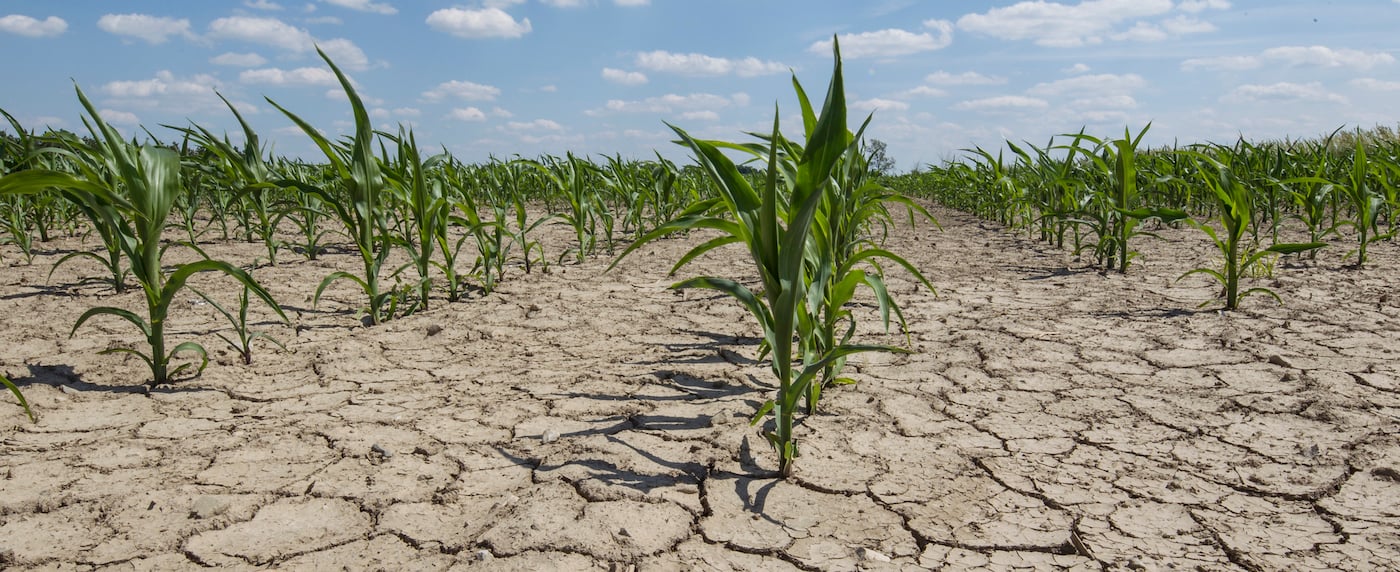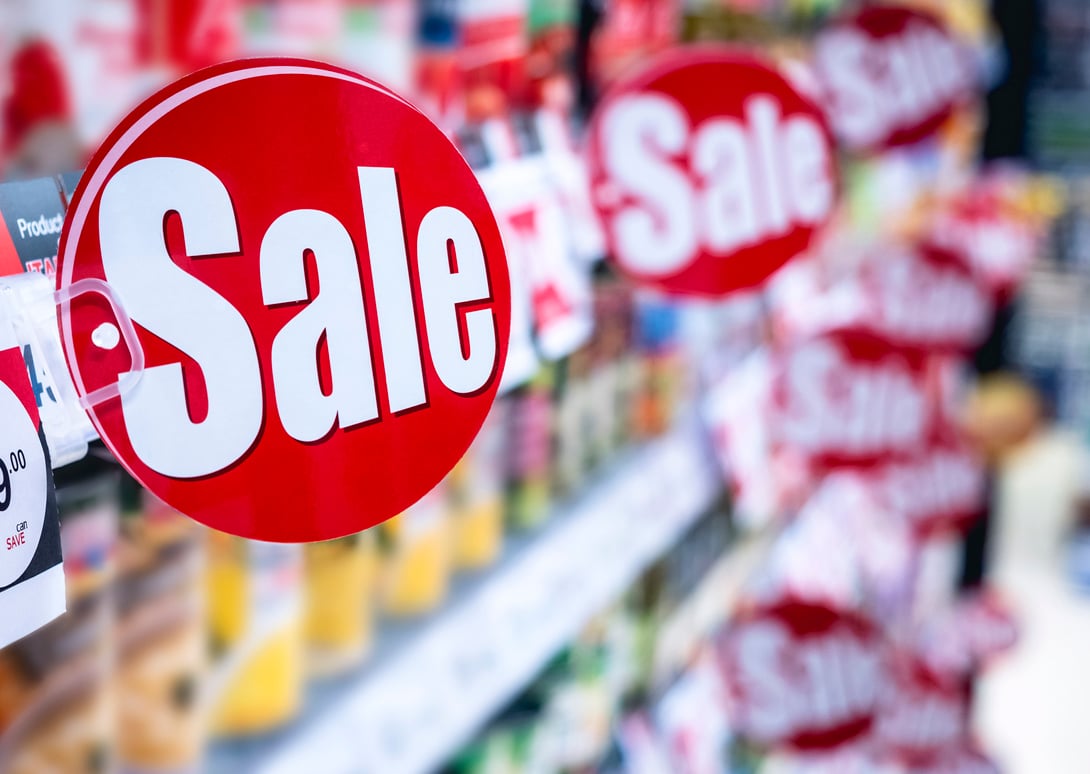
Yesterday, the Intergovernmental Panel on Climate Change (IPCC) released Climate Change 2022: Impacts, Adaptation and Vulnerability, part of its Sixth Assessment Report. The report, which spans 18 chapters and nearly 3700 pages, details the most pressing factors in climate science, looking at bioecology and human factors on a global scale.
While the full report can be a bit overwhelming, we focused on the 37-page Summary for Policymakers, which provides a high-level overview. We also looked at chapter 5 of the report, which focuses on food and other ecosystem products.
The key messages
The long and short of the report is that things are looking pretty grim. The IPCC outlines numerous ways that the food system is being impacted by climate change and vice versa.
Impacts of climate on food
The report pulls no punches in outlining how climate change poses a threat to the food system as a whole. It clearly states that, “Climate change has already had diverse adverse impacts on human systems, including on water security and food production.”
The IPCC website specifically says that many of these patterns previously went unseen, and that there is new knowledge and stronger evidence surrounding the impacts of climate change on food.
“Climate change has already had diverse adverse impacts on… food production.”
These impacts include weakening soil health, an increase in temperature extremes that make both crop and livestock growth more difficult, and a decrease in labor efficiency due to increased heat. The report also lists climate effects on supply chains, transportation networks and infrastructure as supporting causes of food insecurity, and says that some species are reaching their limitations to adapt to climate change.
These changes are happening at a macro scale, too. The report states that, “Although overall agricultural productivity has increased, climate change has slowed this growth over the past 50 years globally.” While global population growth has also slowed over that period, it still threatens to cause even more severe food insecurity than we’re already seeing.
The report also recognizes that, “Increasing weather and climate extreme events have exposed millions of people to acute food insecurity.” The result is an unbalanced food system in which some have an abundance of food, while others – typically the most vulnerable with the least access to modern food technology infrastructure – go without, all because a third of food is wasted globally.
In addition to direct impacts on food production, there are also impacts on supply chain infrastructure and trade. The IPCC predicts that climate change impacts will continue to cause economic damages and transportation disruption. That includes disruptions to ingredient and packaging supplies, which threaten to further interrupt food processing and manufacturing.
Impacts of food on climate
“Food waste also contributes to climate change by utilizing resources that emit GHGs.”
On the other hand, food growth, and food waste in particular, are also inflicting harm on the climate just as much as climate change is harming food production. We’ve stated time and time again on our blog that Project Drawdown has ranked reducing food waste as the top impact driver for reducing greenhouse gas (GHG) emissions.
The IPCC report emphasizes the same point, saying that, “Food waste also contributes to climate change by utilizing resources that emit GHGs.” Curbing that waste is a key factor in our climate future.
Chapter 5 gives a comprehensive look into food loss and waste, as well as the differences between the supply and demand sides of the food economy. “The food system has a supply (production) and demand (consumption) side, connected via processing, trade and retail, with loss and waste streams all along the food chain.” By minimizing this loss along the way, we can build a more sustainable food economy.
A cycle of increased harm
This pattern of climate impacting food and food impacting climate has created a vicious cycle of harm. Coping with the effects of climate change and finding alternative methods to conduct business as usual – rather than addressing the root of the problem – can exacerbate the climate crisis. Let’s take a look at a few hypotheticals:
- As the environment warms, certain crops become more difficult to grow. Farmers become dependent on only the most robust crops, disrupting crop rotation cycles and increasing monocropping. Monocropping makes soil less healthy, making it more susceptible to drought, making more crops harder to grow.
- As rains become less frequent, livestock farmers need to use more water for their animals and to grow feed. This drains the local water supply, increasing the frequency of droughts.
- Due to temperature fluctuations during the growing season, an apple orchard has produced fruit that is healthy to eat, but less hardy than a typical harvest. As a result, 20% of the apples rot before reaching consumers. They are sent to a landfill where they release methane gas, causing further instability to the climate and more temperature fluctuations in future seasons.
This cycle repeats itself at nearly every stage of the supply chain, generating more and more waste in food, growing resources, packaging, transportation, human labor and beyond. The impacts are far-reaching, and without interrupting the cycle we risk it spiraling out of control completely.
Increased demand for more affordable food
One side effect of this cycle is that, at the consumer level, there is a growing need for cheaper food. The combination of decreased food access, increased need, and economic damages from loss and climate change mean that discounted food is more important than ever.

The report outlines how climate factors can disrupt infrastructure and logistics, driving more waste and higher prices:
"Climate-change-related damage to food in storage (e.g. electricity failures and loss of cold storage) and transportation infrastructure (e.g., extreme weather events damaging roads and other infrastructure) could significantly decrease availability and increase the cost of highly perishable, nutritious foods such as fruits, vegetables, fish, meat, and dairy."
As food companies experience loss and waste in their supply chains, they will increase prices in order to maintain profits. At the same time, a decrease in the viability of growing in entire regions can lead to a shrinking industry and higher unemployment. Higher costs and lower incomes mean that consumers are less able to afford food through traditional channels. Instead, they’ll turn to cheaper outlets like discount chains and dollar stores. This is likely part of the reason Dollar General is investing heavily in bringing produce and other perishables to more stores.
Adapting to a changing world
The ultimate question, of course, is what can we do about this? How can we adapt to a changing climate in a way that gets food to as many people as possible, and also slows our greenhouse gas emissions?
Reversing the cycle
To put a stop to – and ultimately reverse – the harmful cycle of climate change in the food system, we have to look for solutions that provide multiple benefits. At Spoiler Alert, we believe that managing excess inventory and liquidating unsold food are critical waste prevention strategies. There are three key benefits that liquidation can have:
- Moving food into discount channels makes it more available to those facing food insecurity.
- Selling inventory, rather than dumping it, prevents food from rotting in landfills and emitting harmful methane.
- Reducing food waste also means reducing the waste of energy, fertilizers, water, packaging and more that went into the manufacturing process.
This three-fold effect attacks both the supply and demand sides of the equation, helping to rebalance the food system and make it more sustainable.
The IPCC report specifically emphasizes that, “reducing food waste, especially of environment- and climate-costly foods,” can help mitigate climate change. It also calls out a transition toward a circular economy as a key goal to reduce that waste. Liquidation can have a significant impact.
The dangers of maladaptation
“Risks arise from some responses that are intended to reduce the risks of climate change”
One key theme throughout the 2022 IPCC report is the threat posted by maladaptation – that is, changes to our sustainability approach that are meant to improve our carbon footprint, but in fact make it worse, just in different ways.
“Risks arise from some responses that are intended to reduce the risks of climate change, including risks from maladaptation and adverse side effects of some emission reduction and carbon dioxide removal measures.” This isn’t specific to food, but appears repeatedly throughout the report. There is, unfortunately, a large portion of environmental effort that is doing more harm than good, and the IPCC outlines several examples. In the food industry, this can include farming crops that are less resource-intensive to grow but have a shorter shelf life and are more likely to go to waste, or switching packaging methods to materials that are more sustainable but take up more freight space, increasing transportation emissions.
Could liquidation be maladaptive?
Thankfully, liquidations don’t often suffer from these kinds of side-effects. Typically, it’s better to put food to use rather than let it go to waste, even if that means transporting it or using energy to regulate its temperature. However, this is something to keep in mind as you build out your liquidation platform. Focus on local buyers in order to keep food miles low. Identify buyers who also have high standards for their sustainability practices, and might recycle or compost any food that goes unsold at the retail level. Make sure that you’re clearly communicating temperature requirements for your goods, both to your buyers and your logistics teams, so that you don’t wind up with food spoilage. By considering small steps like these, you can ensure that your liquidation program is in fact having the positive impact that you want it to.
Conclusion
The IPCC report makes it clear that the global climate crisis is dire, and the need for action has never been more urgent. But the report also emphasizes that those actions have to be deliberate and well thought out, or else risk doing more harm than good.
We believe that minimizing food waste is crucial, and one of the best ways to do that is by maximizing the use of what we have. By liquidating, rather than landfilling, excess inventory, we can begin to reverse the harmful trajectory that the food system is currently on.
To learn more about the climate impacts of food waste and the organizations working to minimize them, dive into the complete IPCC report or download our Beginner’s Guide to Food Waste.
.png?width=250&name=SpoilerAlert_WhiteLogo_LeftStacked%20(7).png)